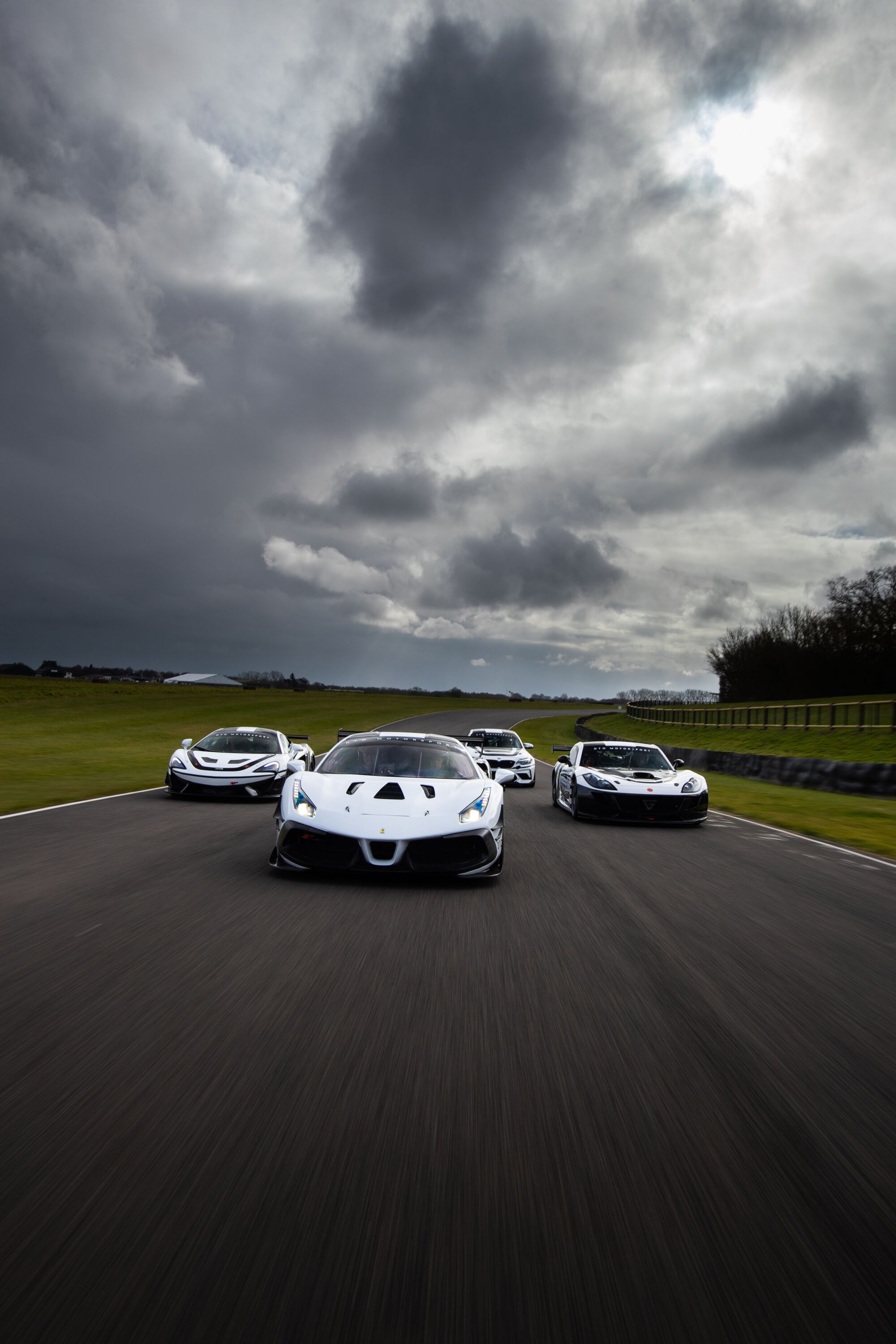INTERVIEW: The V12 Zenvo Aurora picks passion over top speed
Hypercars. They’re everywhere now, right? The once preposterous idea of cramming thousands of horsepower into a road car has become the pastime of ambitious and often slightly unhinged manufacturers all over the world.
The Festival of Speed presented by Mastercard has played host to many a dynamic debut of the automotive industry’s most powerful productions, from companies like Rimac, Hennessey, Koenigsegg, Hispano Suiza, Yangwang, Lotus, to of course the likes of Ferrari and Pagani, and from a small Danish brand called Zenvo.

In recent years, the Goodwood Hill has hosted the dynamic debut of the Zenvo TSR-GT, a 1,360PS (1,000kW) hypercar powered by a 5.8-litre twin-supercharged V8 capable of a 263mph top speed.
Zenvo also brought a brand-new model to the 2024 Festival of Speed for its UK debut, the Aurora, a carbon-fibre-bodied pantheon of power which we now know will be making its dynamic debut at Goodwood in 2025.
The company behind this new hypercar is currently led by Chairman and CCO Jens Sverdrup, who joined in 2021 having previously worked with Koenigsegg, Rimac and Czinger, and manifests his personality and passion through every fibre of the business. At the Festival of Speed, we’re going to get our first proper experience of the first car developed under his watch, but how different is the Aurora to what we’ve seen before from Zenvo?
“It doesn't have anything in common with what's been seen before, is the short answer,” Sverdrup assured us when we caught up with him in May.
“The whole project started with a blank sheet. I came on board, and was tasked by setting the vision and leading this. So, we started with a blank sheet of paper with some sort of idea of modularity.
“I really wanted the cars to look typically Danish. The Scandinavian region is innovative. Per capita by far we are the most innovative place on earth, we're very small countries and we pack a big punch. We're used to thinking outside of the box because of limited resources.”
“There had to be customer-driven innovation, as in not doing gimmicky stuff. Innovate by all means, be as creative as we can, but just make the product better for it. No gimmicks, no crazy numbers, no crazy tricks, no crazy top speed. Whatever makes the best complete driver's car, with balance of all parameters, basically that was the task.”
Quite the task then, especially in an era where the big number pumped out of the powertrain is hallowed with such reverence. The Aurora has plenty of eye-catching figures attached to it, though.
When the car does get up and running for the first time at the Festival of Speed, it’ll do so under the power of a 6.6-litre quad-turbo V12 hybrid engine, with an expected maximum output of 1,850PS (1,360kW). But how do you get someone to care about a car without concentrating on the numbers?
Did we have to do a V12? No, that's literally just because it's awesome.
Jens Sverdrup, Zenvo Chairman and CCO
“We started everything from scratch. Modular monocoque, we wanted to continue the modularity by creating a modular V12. We had an idea of utilizing negative space and sending the aero through the car as opposed to like more traditionally over and under.”
It’s a relatively new philosophy within aerodynamic design, using air flow within the confines of the car itself to generate downforce without having to rely on big wings to stick the car to the ground. Lotus calls this ‘porosity’ but it’s also a design choice we’ve seen on the likes of the latest Ford GT and to some extent the Aston Martin Valkyrie.
It’s a decision that required a fair amount of thought, and plenty of forward planning when it came to the design of the Aurora’s powertrain and gearbox, including the decision to carry all of the development in house to ensure there would be no compromise.
“We had to do our own because there wasn't anything out there. Did we have to do a V12? No, that's literally just because it's awesome. There's just nothing that sounds better than a high-revving big V12, and everything aligned to the point where it could be done, and I've been dreaming my whole life about this.
“Every car company I've ever been involved with in the past, we've always wanted that glorious V12, but it's always been a cost thing and time thing. I'm not going to lie, it probably doesn't have any performance advantages over a V8. But that's not what this car is about. It's about the balance of everything that's great in a car, which also means the emotional factor.”
Once it’s been fully developed, the engine will reach somewhere near 10,000rpm, which we're assured is going to sound utterly biblical. But make no mistake, this V12 isn’t just built to sound good; the Zenvo Aurora’s powertrain is one of the most complex and technically stunning creations we’ll have ever seen. For one thing, the engine’s modular design means it can be reconfigured into a V10 or V8 – you can remove cylinders from the engine and it’ll still work.
The gearbox meanwhile houses an electric motor which serves as the generator, starter motor and reverse gear, alongside providing torque fill and “transient fill” between gear changes to further smoothen acceleration.
“It's a really clever piece of kit,” Sverdrup says, “because we have this electric motor in it, it means we can run helical cut gears like a single shaft because there's so much torque in this engine.”
“The gear change, let's say you put it in race mode, everything from second and upwards is just straight in like a race gearbox. It's literally just slapping the gears in, spitting them in, it’s a very emotional thing to just play up and I don't think anyone will talk much about manuals after that.”
He likens the sound of the Aurora’s transmission to that of a Formula 1 car, but again, this kind of complexity is not just for show, it’s incorporated to save weight by fulfilling multiple purposes with as few components as possible. Keeping things light has been another key element of the Aurora’s development, retaining only what’s essential to delivering on the mission.
The Zenvo Aurora will, according to Sverdrup, be a car that can be enjoyed in any environment. There is, of course, no doubt that it will be capable of reaching astronomical speeds in carefully curated conditions on a runway, but it will be equally as competent touring the countryside or navigating Central London. Lap times, we’re assured, were never the goal.
“We just approached it in a different way,” he says. “It's first and foremost the driver's car, which is I think sometimes hard for the media to get their head around, because it's so easy to get clicks on your top speeds and this and that, but of course these are non-quantifiable values, right?
“It is seriously good performance, of course, but that was never the point. It's a side effect of doing fantastically great engineering, basically to have your cake and eat it too, which is something I tell my team very often.”
“As long as it's safe, usable and exploitable, that's the secret sauce. Not just making a super high-powered, uncontrollable machine but making something that you can do all speeds with. We've taken this driver-focused philosophy and just cranked it up to 11.”
Among the considerations Sverdrup naturally mentions performance, but also steering and brake feel, quality and attention to detail, and each he says has had a proportionate amount of attention spared on its development within the Aurora package to deliver what he believes will be the ultimate driver’s car.
“If it's not fun to drive at 60kph on a narrow mountain road then what's the point in the top speed? What's the point in doing 500 if it's no fun because nobody ever does it?”
That figure of 500kph, or 310mph, is not one he’s simply plucked from thin air. It would be reasonable to expect that the Aurora could manage that in the right circumstances, but to double down on Zenvo’s new philosophy, its top speed has been limited to 261mph because any more than that would be a compromise on the day-to-day driving experience.
None of this is to say Sverdrup doesn’t appreciate the chase for ever higher top speeds, he has been involved in many of Koenigsegg’s record attempts over the years, but he’s ready to make a car that breaks the mould.
“I don't see how that makes the car better for the customer. Now that I’ve had a chance to set my own vision for what a car could be, you could say I learned a lot with other projects. I always found things to be a little bit compromised because we were trying to reach something.”
“Of course, you get great PR and I guess at Koenigsegg this is how we built the brand because we didn't have money for marketing, we put all the money into engineering and just doing these crazy things, but we [Zenvo] are not a numbers car, we're not a numbers brand.”
Sverdrup’s mission since arriving at Zenvo in 2021 has been to diffuse this philosophy throughout the company and its partners, which he says has been quite the challenge in a section of the industry that is defined by power and speed.
“You have to remind people all the time. We also have workers coming from all sorts of competitors, and they bring with them their Koenigsegg mindset, their Aston mindset, their Gordon Murray, wherever we hire them from. It's very easy to fall into your old ways. We're still car guys, all of us, right? From top to bottom.”
It’s been a relentless effort, he says, from himself and his team to remain true to the original brief. Anything that moves away from Zenvo’s new philosophy is reconsidered or scrapped altogether, all in the name of creating the ultimate driver’s car.
“If I'm going to sum it up in one word, it would have to be emotions. But then there's a lot that goes into that bag, right? It’s how it makes me feel or makes anyone feel, however you want to use it. Whether you want to sit and drink a cup of tea and just look at it, which some people do – they'll have it on a turntable and just enjoy the design.”
“There was a time where I was annoyed at that. It's going to a collector and we're spending all this time, we're even spending three weeks setting it up before we deliver it, and it will never be driven. But as I've met more and more of these collectors, it makes them happy. They’re just the same as looking at a famous art piece.
“So, who am I to judge that they're not driving the cars? If it makes them happy and fills them with some sort of emotion, that's what we're looking for. Personally, I would definitely use them, but we all have our ways.”
We know how we’d rather use it, and we’ll be incredibly jealous of whoever gets the chance to drive Zenvo’s latest creation when it makes its dynamic debut at Goodwood.
In all, 100 Auroras are going to be built, 50 of the track-focused Agil spec, and 50 of the more GT-centric Tur, which is what we’ll see in pre-production form on the Hill at the Festival of Speed this July.
The 2025 Festival of Speed takes place on 10th-13th July. Saturday tickets are now sold out, but Thursday, Friday and Sunday tickets are still available.
Goodwood photography by Raife Smith.
road
news
zenvo
Aurora
interview
hypercar





































